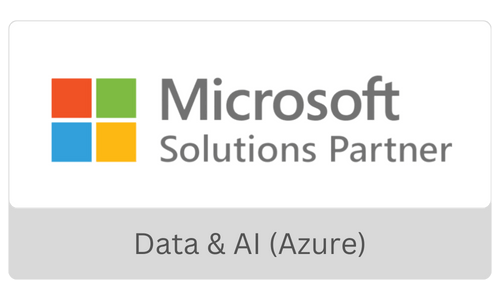According to a Gartner survey, 60% of leaders in IT and D&A reported that their organizations embraced AI-generated synthetic data due to the challenges in real-world data accessibility. Further, 51% of the leaders cited that non-availability of data is driving the adoption. The concerns of data scarcity in the business world and stringent data privacy laws make the availability of real data very limited. Whereas in today’s world, data is the lifeblood of every business. A lack of quality data can impede an organization’s growth. In cases where enterprises are struggling to find data because of data privacy concerns, safety concerns, or because it does not exist, they are looking forward to having synthetic data to fill that need.
As we all know, the latest Generative AI tools excel at crafting meaningful works, images, videos, and more, much like the ones created by humans. Interestingly, we can use generative AI to generate valuable data itself! In this blog, we will explore how we can use generative AI to create synthetic data and revolutionize the way businesses work in a data-parched world.
Overcoming data scarcity with Generative AI and Synthetic Data
Real data is, no wonder, very valuable. However, it is difficult to acquire and comes with several complications. Collecting data can be complex and expensive, and along with it comes security and privacy obligations. Here, synthetic data emerges as a champion solution to this problem. Created by machines and closely resembling real-world data, enterprises can harness synthetic data for many of the same purposes. Generative AI can create synthetic data by finding patterns and relationships derived from actual data. This capability has immense potential across various applications. It ranges from crafting virtual environments for training and simulation to generating fresh data for refining machine learning models.
The base of Synthetic data is real data
By generating synthetic data, enterprises can create information they require to plug gaps within their current records or create entirely new datasets. This does not mean that enterprises do not need actual data; real data serves as the foundational source for creating synthetic data. But when we use this synthetic data effectively, it can lower costs, accelerate the training of machine learning models, facilitate business automation, and ultimately enhance decision-making processes.
What are the challenges with real data?
Across various sectors, organizations are grappling with data-related challenges, hindering them from fully leveraging the capabilities of artificial intelligence solutions. These challenges stem from various factors involving the intricacies revolving around real-world data.
Regulations: Data regulations have imposed stringent guidelines on data usage, emphasizing transparency in data processing. While aimed at safeguarding individuals’ privacy, these regulations markedly limit the types and quantities of data available for developing machine learning and AI systems.
Sensitive Data: Many AI applications involve customer data, which is sensitive. Leveraging private customer data is incorrect, and it requires meticulous data anonymization- an expensive and complicated process.
Financial complications: Non-compliance with regulations can result in severe penalties and can result in severe financial complications.
Data availability: AI models usually need substantial quantities of high-quality historical data for effective training. However, getting such data is often challenging and presents a hurdle in building robust AI models. This is where synthetic data emerges as a critical solution. Synthetic data can generate comprehensive, varied datasets resembling real-world data devoid of personal information. Consequently, it also mitigates compliance risks. Moreover, you can tailor synthetic data as needed, addressing the data scarcity issue and enabling more robust AI model training. By harnessing the potential of synthetic data, organizations can effectively navigate data-related challenges and unlock the full potential of AI.
What is Synthetic Data?
You can generate synthetic data using deep learning algorithms, and enterprises often use it in place of real data. As explained above, real data can be inaccessible due to compliance and privacy requirements or when the data requires changes to fit particular objectives. Synthetic data aims to replicate authentic data by reconstructing its statistical characteristics. After being trained on genuine data, the synthetic data generator can produce any amount of data that closely mirrors the patterns, distributions, and interconnections observed in the real dataset. This approach not only allows the generation of analogous data but also enables the imposing of specific constraints on the data as necessary.
How does Generative AI create Synthetic Data?
It generates synthetic data using deep ML generative models such as Generative Pre-trained Transformer (GPT) methodology, Generative Adversarial Networks (GANs), and Variational Auto-Encoders (VAEs). Let us understand how.
- GPT, a language model trained on extensive tabular data, generates realistic synthetic tabular data. GPT-based synthetic data generation tools understand and replicate patterns from the training data. It makes them valuable for augmenting tabular datasets and creates realistic tabular data for ML tasks.
- GANs function on the interplay between “generator” and “discriminator” neural networks. The generator produces synthetic data that mimics reality, while the discriminator distinguishes real data from synthetic data. During training, the generator competes with the discriminator to craft data that attempts to deceive the model, resulting in a high-quality synthetic dataset resembling the real data.
- VAEs employ an “encoder” and a “decoder”. The encoder summarizes the patterns and characteristics present in real-world data. The decoder seeks to transform that summary into a lifelike synthetic dataset. As a result, VAEs generate fabricated rows of tabular data that reflect the same rules as their real counterparts.
Use cases of Synthetic Data
Let us see some instances of Generative AI and Synthetic Data application across diverse industries. With further ongoing innovation, we can anticipate even more exciting applications in the future.
Healthcare
The healthcare industry reaps tremendous benefits from synthetic data. Healthcare organizations can generate synthetic medical records or claims to support research without breaching sensitive patient confidentiality.
Similarly, researchers can use Generative AI to create synthetic medical images, such as (CT/MRI scans) that are essential for training AI algorithms/ ML models. This eliminates the need for real patient data, acquiring which is challenging, enabling the creation of extensive datasets for research.
Financial Services
Financial services can use synthetic data to anonymize sensitive client information, ensuring secure development and testing processes. Additionally, synthetic data can play a crucial role in augmenting the limited fraud detection datasets, thereby improving the effectiveness of detection algorithms.
Software Testing and Development
Synthetic data can generate production-like data for software or application Testing and Development testing purposes. This capability empowers developers to validate the applications under conditions that closely resemble real-world operations. Additionally, enterprises can utilize synthetic data to build testing datasets for machine learning models. Thus, expediting the quality assurance process by supplying diverse and scalable data without raising privacy concerns.
Machine Learning model training
Relying on the synthetic data, data scientists can support the existing datasets, specially in cases where the data does not exist or is limited.
Insurance
In the insurance sector, synthetic data can be valuable for generating simulated claims data. This can facilitate the modeling of diverse risk scenarios and contribute to developing precise and equitable policies while preserving the privacy of actual claimants’ data.
Automotive
Car manufacturers can use generative AI to produce synthetic images of their vehicles in various environments. This enables them to assess the appearance and performance of their cars in different situations without constructing expensive physical prototypes.
Retail
Retailers can use generative AI to generate synthetic images of clothing and other merchandise. This lets them exhibit their products in various settings without expensive photoshoots.
Gaming
Video game developers leverage generative AI to craft lifelike environments and characters, enhancing the gaming experience. This innovation allows for the creation of immersive gaming worlds without requiring large teams of artists and designers.
Product design
Apart from these use cases, organizations can leverage synthetic data in product design. By using synthetic data in creating standard benchmarks, businesses can assess product performance in a controlled landscape. (Such as in the automotive industry, as explained above.)
Behavioral simulations
Organizations can also employ synthetic data to test hypotheses and validate the models without using original data, thus allowing behavioral simulations.
Overcoming challenges and ethical considerations
A significant challenge with real-world datasets is their tendency to have skewed or biased data, depending on the data source. This issue results in biased models across various domains, from art generation to healthcare algorithms. In the healthcare sector, this bias has raised concerns, prompting the World Health Organization (WHO) to issue caution against using AI to make healthcare decisions. Introducing synthetic data in these contexts can help alleviate concerns about biased data leading to skewed models and algorithms. As synthetic data is based on real-world data, which can already be biased, this could entail generating additional samples for a particular class if needed.
However, the primary hurdle associated with synthetic data lies in its dependence on real-world data for its generation. For instance, in healthcare, where data quality is paramount, the quality of datasets can be a matter of life and death. Thus, synthetic data must resemble real-world data closely. Achieving this requires access to accurate data. Yet, in scenarios where data privacy is a critical concern or is legally mandated, using data to create synthetic data becomes a delicate balance. Companies must consider the potential traceability of synthetic data back to its original contributors, which undermines the fundamental purpose of using synthetic data.
Conclusion
In conclusion, the dynamic combination of Generative AI and Synthetic Data will change the data landscape as we currently know it. These technologies address crucial issues effectively, from data scarcity and privacy concerns to compliance with regulations, unlocking new possibilities for AI development. No doubt, the future of Synthetic Data looks promising as the applications across industries are ever-expanding. Its capability of providing diverse, abundant, and privacy-complaint data sources can be the key to unlocking game-changing AI solutions and propel us to a more data-empowered future. If you are looking to accelerate your business with the power of Generative AI, get in touch with us.
















